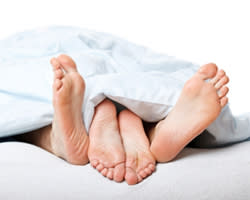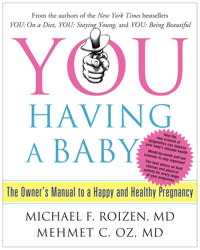Dr. Oz's 5 Fertility-Boosting Tips

Did you know that vigorous exercise can prevent ovulation? Should you use the good old missionary? Learn more on what to do-and not to do-to improve your fertility chances, from YOU: Having a Baby: The Owner's Manual to a Happy and Healthy Pregnancy, by Michael F. Roizen, M.D., and Mehmet C. Oz, M.D.
Time It. When's the ideal time during your cycle to have sex? (Anytime! he says.) If you're trying to increase your chances of conception, your best opportunity is one to two days before ovulation. To maximize sperm quantity and quality, have sex every two or three days starting five days before ovulation -- because sperm can live for at least forty-eight hours in the vagina, you'll be covered. The challenge is that the actual day of ovulation can change from cycle to cycle. So what are the clues?
Cervical fluid: A change in cervical fluid can indicate that you are close to your peak ovulation day. Fertile fluid is stretchy and slippery; otherwise, it's more creamy and lotionlike. Just separate your vaginal lips and use a tissue or your finger to check the fluid at the opening, down near your perineum. Slowly open your fingers to see if it stretches to about the length of half a banana. If it does, it means you are getting ready to ovulate. Timing intercourse every other day for five days around this time should give you a good chance.
Waking temperature: While your waking temperature is lower before ovulation (97 to 97.7 degrees F.), it rises after ovulation (97.8). The elevation typically happens a day after ovulation because of the hormone progesterone, which induces heat. You can get a sense of when you're ovulating by taking your temperature first thing after waking, then plotting the numbers to a tenth of a degree. Ovulation has occurred when you see a more dramatic shift than the day-to-day fluctuations that happen during the rest of your cycle. That will give you an idea of which day in your cycle typically is your ovulation day.
Watch the Trans Fats. One of the best ways to increase fertility is to keep your lousy LDL cholesterol and your waist size low. Reducing the trans fats in your diet will help on both fronts. Research shows that the more trans fats in a woman's diet, the greater the risk of miscarrying. That's especially true when trans fats make up more than 5 percent of your daily calories. Eating too many simple carbs, as well as inadequate amounts of iron and protein, can also negatively affect fertility.
Don't Lubricate. We like admonishing you with a series of don'ts about as much as we like fried fish platters. One don't we can't avoid: sexual lubricants. While they can be helpful (and pleasing) in many circumstances, they actually can slow down sperm. And in the race of capture-the-egg, that can cost you the game.
Wait a Little: What's the best sex position for fertilization? Missionary? Reverse cowgirl? Something involving a leather ottoman? While the data are inconclusive that any sex position is better than another, it does seem that your odds go up with the missionary position and with the woman remaining on her back for fifteen minutes after the man ejaculates, which increases the chance that the sperm will make it upstream.
Don't Overdo It: If you exercise as if it's your job, you might be hindering your fertility. Vigorous exercise prevents ovulation. You will know by the irregularity of your menstrual cycles. Ask your doctor how you can modify your exercise plan to restore your normal pattern. No ovulation means nobody's going to be putting any cribs together anytime soon. While it's obviously important to stay healthy and exercise, in general we don't think you should run more than ten miles per week (or the equivalent in other forms of exercise). Because every woman's baseline fitness level is different and every pregnancy is different, it's impossible to know for sure how much is too much for your body and baby.
RELATED LINKS:


